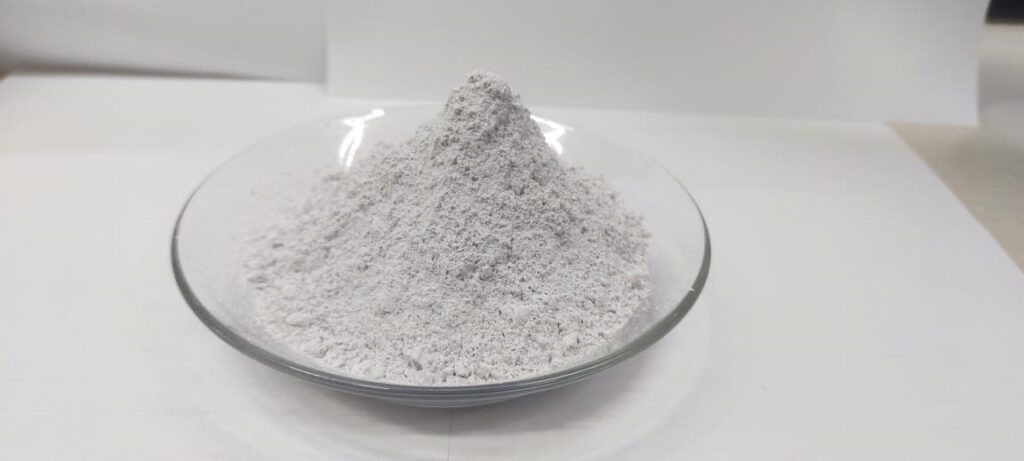Self-flowing refractory castables that will self-flow under their own weight and easily fill intricate shapes by their own gravity. In the past most castables were installed by gunning or casting, the latter requiring internal or external vibration for the placement of low cement castables to fill in behind forms.
Its characteristic is that the performance of the self-flowing refractory castable is slightly better than that of the vibrating low cement refractory castables. The ability of self-flowing castables is to move behind forms and around anchors in difficult to reach areas providing and advantage during installation.
The products are self-flowing, meaning that customers are simply required to prepare the mix and pour it into the mold or area. The product will flow into all zones automatically.
HRW has developed self-flowing castables on the basis of low cement and ultra-low cement castables. It is composed of refractory aggregate, powder, and high-efficiency dispersant with a certain particle size gradation. The key is the rational use of ultrafine powder particle size, quantity and high-efficiency dispersant so that the refractory monolithic castables can achieve self-flowing and automatic spreading.
Key Benefits
- Reduced downtime
- Increased productivity
- Time saving (no additional or specific preparation is necessary)
- Better working conditions
- Lower noise levels
- Improved safety (no need to walk on formworks with vibrating needles)
- Enhanced performance
- Better aspect of surfaces and edges
- Greater freedom in terms of structure design.
- It can be pumped for construction, reducing labor intensity and speeding up the construction cycle.
- It is easy to carry out construction performance tests on site.
Applications:
Self-flowing castables are now being used, often times replacing brick, plastics, and conventional castables, in installations in ladles, aluminium furnaces in the upper sidewalls and roofs, ceramic kiln car decks and in the steel industry in ladle covers, tundish covers, tundish safety linings, and precast shapes. They are also used in rotary kilns as nose rings, lifters, firing hoods, coolers, preheater maintenance, and in incinerators in charging zones and burners.
Below are the range of self-flow castables that HRWPL caters to its customers.
| Brand Name:- | HR SFC 95 | HR SFC 60 | HR SFC 70 | HR SFC 90 CR | ||||
| Type | 95 % Alumina Self-flow Castable | 60 % Alumina Self-flow Castable | 70 % Alumina Self-flow Castable | Chrome based, Micro silica free, 90% Alumina Self-flow Castable | ||||
| Installation | Vibration / Free Flow | Vibration / Free Flow | Vibration / Free Flow | |||||
| Raw Material Base | WTA, CAC, Microsilica | Mullite, Cal Bxt | Mullite, Cal Bxt | |||||
| Max Service Temp. | 1750°C | 1600°C | 1650°C | |||||
| Max Grain Size | 5 mm | 5 mm | 5 mm | 5 mm | ||||
| Water Required for Casting | 4.5 – 5.5% | 8-9.5 | 7.5-9.0 | 4.5 – 5% | ||||
| Chemical Analyses: – (%) | Typical | Specification | Typical | Specification | Typical | Specification | Typical | Specification |
| Al2O3: | 93.20 | 92 – 95 | 59.5 | 58-60 | 59.5 | 68-70 | 91.46 | 58-91 |
| Fe2O3: | 0.29 | 0.30 Max | 1.05 | 1.0-1.2 | 1.05 | 1.0-1.2 | 0.2 | 0.3 Max |
| Cr2O3: | – | – | – | – | – | – | 2 | 2 |
| Physical Properties: – | ||||||||
| B. D (gm/cc) Drying at 110°C/24 hrs. | 2.87 | 2.85 Min | 2.45 | 2.40 Min | 2.53 | 2.5 Min | 3.29 | 3.1 |
| Cold Crushing Strength (Kg/cm2): | ||||||||
| Drying at 110°C/24 hrs. | 445 | 400 Min | 345 | 300 Min | 345 | 350 Min | 530 | |
| Drying at 1000°C/3 hrs. | – | – | 560 | 500 Min | 540 | 500 Min | ||
| Fired at 1500°C/3hrs. | 740 | 700 Min | – | – | – | – | ||
| Fired at 1550°C/3hrs. | – | – | 750 | 700 Min | 790 | 750 Min | ||
| Fired at 1600°C/3hrs. | 880 | 850 Min | – | – | – | – | ||
| PLC (%) | ||||||||
| Fired at 1000°C/3hrs. | – | ± 0.50 | ||||||
| Fired at 1500°C/3hrs. | -0.3 | ± 0.50 | -0.2 | ± 0.50 | -0.2 | ± 0.50 | -0.06 | ± 0.50 |
| Fired at 1600°C/3hrs. | -0.6 | ± 1.0 | +0.8 | ± 1.5 | -0.5 | ± 1.5 | ± 0.50 | |
| Packing | 25/50 Kg Bags | 25/50 Kg Bags | 25/50 Kg Bags | 25/50 Kg Bags | ||||
| Storage Life | 3 Months | 3 Months | 3 Months | 3 Months | ||||
| Delivery State | Dry Powder | Dry Powder | Dry Powder | Dry Powder | ||||
|
The data shown are based on average results on production samples and are subject to normal variation on individual tests hence cannot be taken as specification. Max and min. values are given separately for testing purpose. Water requirements indicated are based on laboratory test conditions. Actual water requirement may vary subject to site conditions. The properties shown are for vibratory cast material only unless specified otherwise. All values are based on test results on standard bars of size 160x40x40 mm. Test methods are guided by and based on various Indian Standards (IS). |
||||||||

